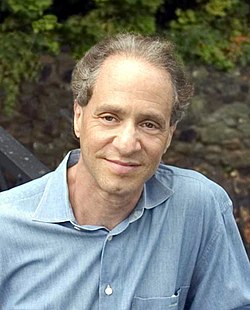Everybody has experienced moors law in one way or another, for me it was when I was introduced into hard disk recording for audio purposes. Round the time of the 90's music recording was done on tape digitally and I got to record 8 audio tracks on mini video cassette tape (similar to analogue home movie cameras). I had 3 Tascam DA-88's which gave me 24 tracks of recording, half of which was used on drums. Around the corner was a Protools system which had recorded 8 tracks and playback via the computer. By then I had to buy 1 gigabyte cartridges called Jazz drives. The computers were of the pre giga hertz speed typically 500mhz. Just after university I knew I was amazed by the speeds reaching 1 gigahertz and beyond.
Technology growth doesn't seem much until you experience it yourself, I typically ignored the technical name but half aware of Moors Law. But recently with smart phones and the process power of small project computers like the Raspberry Pi, I often what is Moors Law and how it effects technology altogether.
The term "Moore's law" was coined around 1970 by the Caltech professor, VLSI (very large scale integration) pioneer, and entrepreneur Carver Mead in reference to a statement by Gordon E. Moore. Predictions of similar increases in computer power had existed years prior. Alan Turing in his 1950 paper Computing Machinery and Intelligence had predicted that by the turn of the millennium, we would have "computers with a storage capacity of about 109", what today we would call "128 megabytes."
Moore may have heard Douglas Engelbart, a co-inventor of today's mechanical computer mouse, discuss the projected downscaling of integrated circuit size in a 1960 lecture. A New York Times article published August 31, 2009, credits Engelbart as having made the prediction in 1959. Moore's original statement that transistor counts had doubled every year can be found in his publication "Cramming more components onto integrated circuits", Electronics Magazine 19 April 1965:
Moore slightly altered the formulation of the law over time, in retrospect bolstering the perceived accuracy of his law. Most notably, in 1975, Moore altered his projection to a doubling every two years. Despite popular misconception, he is adamant that he did not predict a doubling "every 18 months." However, David House, an Intel colleague, had factored in the increasing performance of transistors to conclude that integrated circuits would double in performance every 18 months.
Transistors inside new Intel CPUs unveiled are hundreds of times thinner than a human hair thanks to a 22-nanometer manufacturing process that the company says “fuels Moore’s Law for years to come.”. Despite Intels claims, we are beginning to see a slowed down trends with faster processors and a increase with parallel processing with dual, quad or multi core chips. this tweaking of performance levels to fit mores law will have to end eventually as silicon wafers can only go so small that thermal dynamics and even quantum mechanics will make it impossible for logic circuits to work.
Smaller processors get hotter and faster, which in-turn exceeds the operating parameters of normal electronics. Despite the doomsaying American author, inventor and futurist Ray Kurzweil predicts that in the run up to the predicted time Moores Law end 2020, technology will have developed in the way that we can circumvent the problems and yet have the same performance according to the Law. In Kurzweils lecture he mentions that paradigm shifts or a change in scientific technologies has happen from valve technology in the first computer, to transistors for microchips. The paradigm shift for 2020 points towards quantum computers (which exists but is expensive and currently impractical for a consumer market) or alternatively bio engineering.
The next generation of computers might involve the merging of biological and normal silicon based logic circuits. Kurzweil predicts a singularity around the time of 2030, meaning that process power can hopefully capture the human brain for a immortal existence. Considering that forward thinking might lead to innovation, I sit on the fence for the next generation of computers. Technology might go one way but its really a coin flip when you don't know the full facts. Other factors such as political hindrance, certain disasters or even hiding technologies might prevent Kurzweil predictions. Moores Law has provided a guide for predicting technologies, its given engineers a challenge that is yet to be beaten. But because of limits in nature it might turn certain tech industries up side down when the end is a few years from now. Hopefully I am predicting an end to constant upgrades where upon smart phone companies try to sell the latest flash designs. In the end, smart phones need to be a certain size or speed to work well enough any more just gets ridiculous. If the future predicts integration of man and machine, then I am glad I am at a point where I can simply just walk away from technology and switch off...
This is the every now and again wall posting of my blog filled with music, Film, science and my love of 8mm film and other geeky things...
Subscribe to:
Post Comments (Atom)



No comments:
Post a Comment